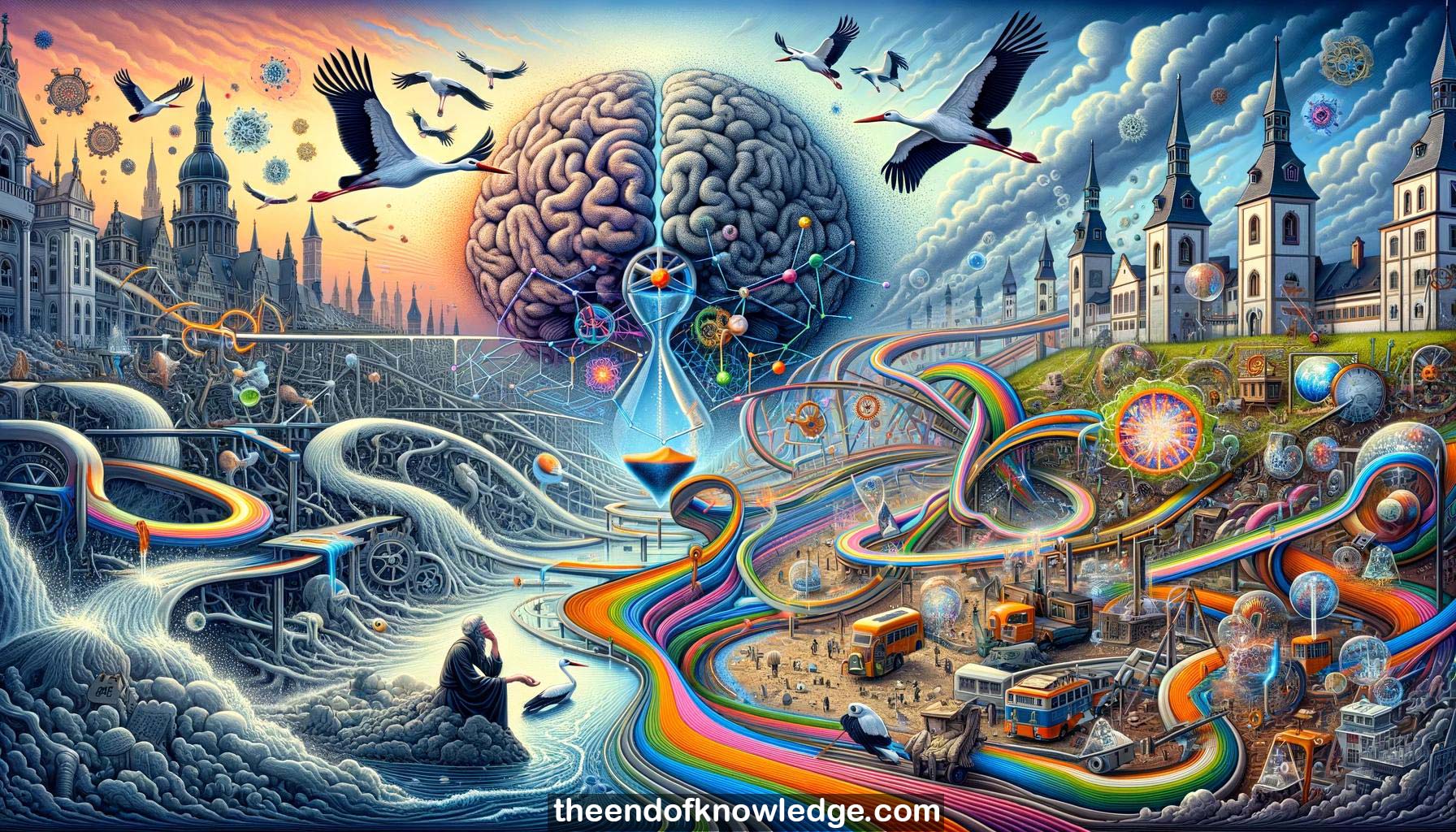 >
>
Concept Graph & Resume using Claude 3 Opus | Chat GPT4 | Gemini Adv | Llama 3:
Resume:
1.-Bernhard Schölkopf is known for developing support vector machines and leading the kernel revolution in the early 2000s before deep learning.
2.-Dependence versus causation is a big historical issue in philosophy of science and science in general.
3.-There is a strong correlation between the number of storks and human birth rates in Germany, but correlation doesn't imply causation.
4.-If two observables X and Y are statistically dependent, there exists a third variable Z that causally influences both of them.
5.-Without additional assumptions, we cannot distinguish cause from effect based on just observational data of two variables.
6.-A causal model contains genuinely more information than a statistical model. Causal models were further developed by Judea Pearl and others.
7.-In a causal graph, arrows represent direct causation. Each node has a function giving its value based on its parents.
8.-Every change in an observed distribution must come from a change in the causal conditionals/mechanisms or the noise variables.
9.-Factorizing a distribution according to the wrong causal graph implies changing one factor requires changing others to maintain overall distribution.
10.-Causal decomposition into invariant conditionals makes it easier to learn from different tasks/datasets, explaining why modeling phonemes helps model acoustics.
11.-Statistical independence of cause and mechanism can be formalized as vanishing covariance between input density and log derivative of mechanism.
12.-Provable asymmetry: independence in causal direction implies dependence in anticausal direction, allowing inference of cause vs effect from data.
13.-Causal structure captures physical mechanisms that generate statistical independence. Statistical structure is an epiphenomenon of underlying causal model.
14.-Causal model implies Causal Markov Condition - a node is conditionally independent of non-descendants given its parents in the graph.
15.-Reichenbach's common cause principle links statistical dependence to causal graph. But statistical independence is not fundamental, causal independence is.
16.-Kolmogorov complexity formalizes independence without probability, proving graphical model results. Implies thermodynamic arrow of time from causal model.
17.-Causal direction makes a difference in machine learning - generative direction shows independence between layers, discriminative shows increasing dependence.
18.-Semisupervised learning impossible for causal problems, potentially helpful for anticausal due to dependence of p(x) and p(y|x). Matches benchmarks.
19.-Removing confounding by exploiting independent mechanisms and half-sibling structure enabled discovering new exoplanets in Kepler telescope data.
20.-Enforcing fairness can be framed as causal inference problem. Technique developed using causal methods.
21.-Neural architecture learns to invert independent causal mechanisms from mixed data via competition between experts and discriminator feedback.
22.-Independence of causal mechanisms enables specialization of experts to mechanisms during competitive training. Generalizes to novel input classes.
23.-Goal is learning structural causal models that enable task transfer via independent, reusable components. Related to disentanglement.
24.-Much progress in learning representations of i.i.d. data, but representing interventional distributions of causal models is an open question.
25.-Representing causal models for reasoning and planning has to do with "thinking" - acting in imagined spaces per Konrad Lorenz.
26.-First industrial revolution driven by steam engine (energy). Current "revolution" started mid-20th century, driven by information (cybernetics).
27.-Information processing at industrial scale requires computers. Intelligent information processing may require AI and machine learning.
28.-Information may be a conserved quantity in physics like energy. We can convert and process it but not create it.
29.-Current AI success based on "crude" information processing. Deeper understanding may come from causality - statistical information is an epiphenomenon.
30.-Open problems remain in understanding causality and time, representation learning for causal models. Much more research is needed.
Knowledge Vault built byDavid Vivancos 2024